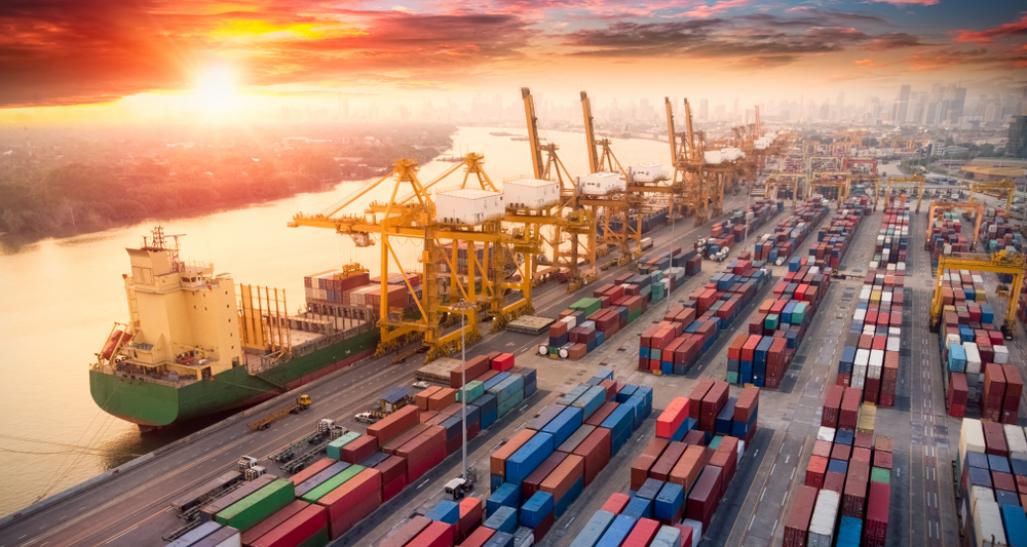
Season is coming how to by-pass Supply Chain crunches
The Covid-19 pandemic, which has wreaked havoc in the world since 2020, has directly affected people's lives and deeply shaken the world trade network. While the pandemic that started in China changed our lifestyle, it also triggered serious problems in the supply chain.
Along with the effects of the crisis, which grew because of the markup in energy and raw materials, the delays in the transportation and logistics network have just begun to return to normal. During this process, it was understood how important supply chain management is for all commercial enterprises.
What is the Supply Chain? What Stages Does It Consist Of?
The supply chain is the process that covers all the activities and necessary connections for businesses and brands to deliver the goods and services they produce to consumers.
An efficient and optimized supply chain effectively meets consumer orders and logistics needs. At the same time, it reduces production and distribution costs and ensures that products reach the customer in a shorter time.
The supply chain includes not only the manufacturer and supplier, but also carriers (logistics), stockists (warehousing), retailers, and even the customers themselves.
The customer is an indispensable part of the supply chain. The main reason is to meet the needs of the customer and make a profit.
The supply chain has 3 stages: supply, production, and distribution.
The supply stage is focused on how, where, and when raw materials are supplied. Production turns these raw materials into a product and distribution, which is the last stage of the whole process, provides the final products to reach the customer through a network composed of distributors, warehouses and retailers.
What is Supply Chain Management? Why Is It Important For Companies?
Supply Chain Management (SCM) emerged as a combination of technology and best business practices around the world. A successful supply chain delivers the right product to the customer at the right place, at the right time, at the required price, and the lowest possible cost.
Supply chain management is based on the planning, organization, direction, and control of supply chain activities. These activities include the management of money flows of products or services along the entire chain to maximize the value of the product or service delivered to the consumer.
An efficient supply chain management makes the follow-up of product quality control easier, operating cost reduce and the products deliver to the customer faster. With customer satisfaction, it becomes easier for businesses to achieve their goals.
Effects of the Covid-19 on the Supply Chain
The COVID-19 has deeply impacted global economies. This has caused supply shortages from which the countless businesses around the world suffer. While the domino effect continues throughout the global supply chain, many international companies, including textile ones, have been affected by the pandemic.
Delays in production, lack of space at container ports, and a shortage of drivers have increased the difficulties in maintaining the supply chain.
Restrictions on this chain have impinged on the leading industries, including electronics, automotive, consumer goods, pharmaceutical, and medical equipment and supplies.
Moreover, the interconnection among the supply chain influenced textile and chemical industries deeply that textile, apparel, leather, and footwear industries suffered from factory and store closures, drop in sales, and finding resources.
Logistical constraints and shipping regulations have brought about shipments to be delayed. With high demand and low material supply, price increases have become inevitable.
Today's globalized supply chain network is optimized to set minimum delivery times at the lowest possible price. Although the pandemic is the crisis that most affected global supply chains, this process has made it necessary for companies to recognize their shortcomings and take steps toward them.
For all these reasons, we entered a period of re-examination of the supply chain network. Companies are re-evaluating their production, transport and storage networks and are changing their courses to strategies that will ensure long-term supply security.
Digital Transformation in the Supply Chain
Covid-19 disturbs the serenity of all business sectors. Changes in supply chains and customer behaviors have necessitated the development of new strategies.
Advanced technologies are rapidly changing the way of the companies on developing products and solutions, interact with customers, and managing operations. An example of this change is that many companies have introduced a new business model by offering their employees the opportunity to work from home.
In this context, it is important to achieve efficiency both in the industrial field and throughout the supply chain by transforming its processes in order to improve customer service, reduce operating costs and improve margins.
In addition to this, today's supply chain consists of a series of steps that are isolated and taken from different departments (Marketing, Product Development, Purchasing, Production, or distribution) to meet customer needs.
Digitalization removes the barriers between these processes and provides an integrated and transparent ecosystem for raw material suppliers of the supply chain, product manufacturers, and customers.
The digital supply chain includes integrated planning, intelligent logistics visibility, intelligent warehousing, digital purchasing, and advanced predictive analytics.
All of these things enable companies to predict and address supply chain disruptions, model it end-to-end, and adjust in real-time as the conditions change.
In this way, by providing more efficient and transparent services to customers, companies gain a high degree of flexibility and agility, and this creates a competitive advantage.
The Importance of Turkey for Textile, Fashion, and Ready-to-Wear Wholesalers
Especially during the pandemic, Turkey, a country that unites Asia and Europe, has become the best procurement center for companies in a supply chain.
Many quality brands produce for the fashion and ready-made clothing sector in Turkey, which has a logistics advantage with its proximity to the European market.
Turkish fabrics, textiles, fashion, and ready-to-wear products stand out in competition with countries such as China and India in terms of quality and price.
Especially during the pandemic, the supply chain problems experienced in China and Asian countries have been effective in choosing Turkey as a new procurement point.
Turkish manufacturers can produce a wide variety of textile products and fabrics, and the fact that everything can be produced in one country simplifies logistics and sourcing for retailers, as well as speeding up delivery times.
Asia cannot compete with Turkey's proximity to Europe because it allows shoppers to quickly reorder popular products in a given season (this is very important in the fashion industry). Orders can be placed within five to seven days and samples can be received. If we compare it with Asia, shipping samples from China to France takes at least 41 days.
Turkey has become one of the three most attractive procurement areas in Europe with its low prices in textile and clothing products, the quality of its products, the reliability of its suppliers, and the speed of delivery.
MAY SCARF: Supply Leader in the Textile and Fashion Industry
May Scarf is the leading brand in Europe and the Middle East in the field of production and sale of textile products. We are at your service with socks, berets, scarves, sweatshirts, and licensed clothing products that we produce in different colors and designs. We are the ideal business partner for companies that actively sell through e-commerce, Instagram boutiques, wholesalers, distributors, and companies that sell fan products.
At the most affordable prices, we deliver the products we produce in our factory which has a wide production capacity in European quality standards. Please contact us for detailed information!



